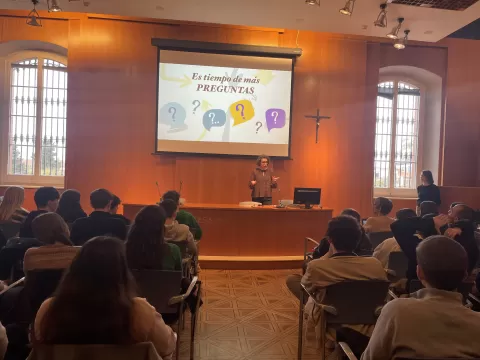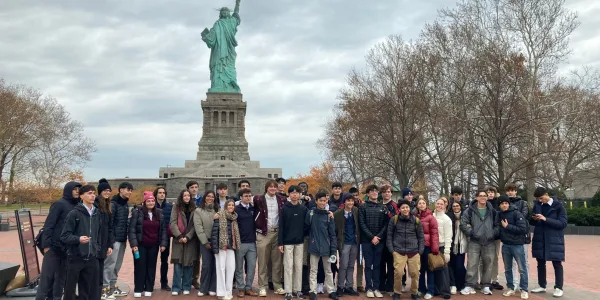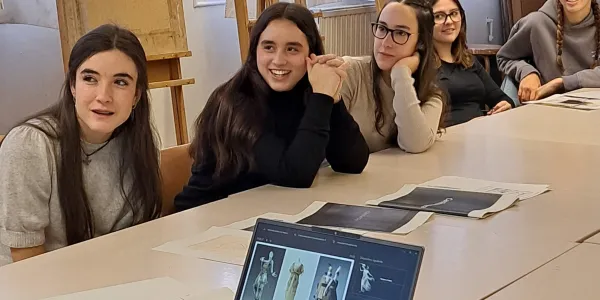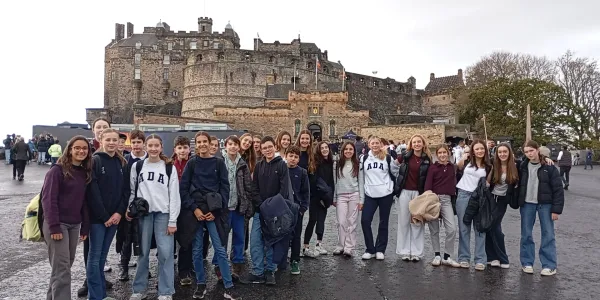January
30th,
2024
Physics and mathematics, where can they take me?
On 29 January, students from the Science and Technology baccalaureate attended a talk delivered by María Ángeles García Ferrero, who holds a degree in Physics and a PhD in Mathematics and was acknowledged in 2019, by the Spanish Royal Mathematical Society, as Spain's best young mathematician. The title of the talk, which was held in the Sala Espinal, was Physics and mathematics, where can they take me?
Drawing on her own experience and using a language that is easy to understand, she began by explaining that she earned her degree in Physics at the University of Valladolid. The decision to study Physics was rather last minute: until the very last moment she was hesitating about whether to study Mathematics. Physics was what finally won her over because of its high mathematical content and also because this discipline makes it possible to explain a large number of natural phenomena.
Upon graduating, she pondered various paths and opted for research. She did her PhD in Mathematics (in fact, it was what she had most enjoyed studying in Physics), defended her thesis and then began her postdoctoral research stays: first at the Max Planck Institute in Leipzig and at the Institute of Applied Mathematics in Heidelberg, and later, with a grant, in Bilbao. She later became a lecturer at the UB and also became a full scientist at the CSIC.
She wanted to highlight two aspects of her work as a researcher:
- A great deal of teamwork.
- Reporting results in articles and conferences.
She also commented on two other aspects:
- Most people who are involved in research do it at the university and this context also involves teaching.
- Some researchers also carry out outreach work.
María Ángeles also spent some time explaining her field of research: “Inverse problems in partial differential equations”. All this mathematical apparatus is used, for instance, to determine the resistivity of a body from measurements of potential and intensity in its contour, which is applied to electrical resistivity or electrical impedance tomography.
In the last part of her talk, she spoke a little about the cut-off marks for Mathematics, Physics and also the double major, which has very few places, meaning that the cut-off marks are very high. She also mentioned other degrees with a high mathematical component but with more applied profiles. These are studies that always have many career options in a range of fields:
- University/research
- Pre-university education
- Banking and finance
- Technology companies
- Consultancy
- Public administration
- IT/Telecommunications
- Others (publishing houses, management, etc.)
There is a wealth of possibilities and no unemployment. In fact, there are students who are already working before finishing their degree.
The event, which was rounded off with the answers that María Ángeles gave to the questions posed, proved to be very useful for the academic and professional orientation of the students attending the event.
Image



